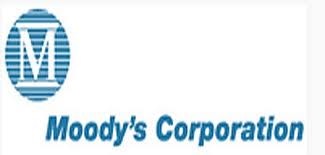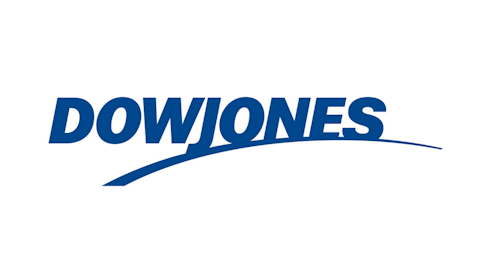While the underlying business may be in for a world of hurt, Moody’s Corporation (NYSE:MCO) is on a tear. Since the 2009 bottom, Moody’s Corporation (NYSE:MCO) is up nearly 300% compared to the 112% return from the S&P 500 Index.
Here’s why the company’s rally may come to a screeching halt.
Higher rates could squeeze rating revenue
Moody’s Corporation (NYSE:MCO) generates substantially all of its income from ratings services on corporate debt and equity issuance. When companies go public by selling stock, Moody’s provides its customers with analysis on the company’s future value.
Besides its equity analysis business, Moody’s Corporation (NYSE:MCO) has a large debt and credit rating arm which provides ratings for new bond issues. The business is highly cyclical, making more money when companies issue more debt, and making very little when the debt markets are inactive.
Through April, public companies raised $1.2 trillion in new debt in 2013, putting debt issuance on pace to nearly match record debt issuance in 2009. Unfortunately for Moody’s Corporation (NYSE:MCO), interest rates are headed higher, which should slow the record issuance of corporate credit, and business for its credit rating unit.
But a slowdown in credit rating is simply an ebb and flow in a cyclical business. Another major risk hides in the shadows: litigation.
U.S. Justice Department vs. Moody’s
In the first quarter of 2013, Moody’s settled a lawsuit surrounding its ratings of mortgage-backed securities and structured investment vehicles during the 2008 financial crisis. Moody’s, Standard & Poor’s, and Morgan Stanley agreed to evenly split a package worth $225 million.
This civil suit is just one of many expected litigation problems coming down the pipeline. While the lawsuit was one of the biggest civil suits Moody’s could face for its ratings inaccuracy, the major credit ratings agencies have yet to face larger suits from state and federal governments.
The U.S. Justice Department is already pursuing a suit against Standard & Poor’s for its participation in giving high-quality ratings to low-quality collateralized debt obligations. Moody’s was not named in the lawsuit; however, there is ample reason to believe a large-scale legal battle is in the works.
The U.S. Justice Department says 33 different CDOs are ample evidence that Standard & Poor’s put profits before ethical ratings standards. Moody’s rated 31 of the 33 CDOs at the same level as Standard & Poor’s, according to the Wall Street Journal. If the government wins its case against Standard & Poor’s, it can surely defeat Moody’s in the courtroom.
A legal victory against Moody’s could result in fines in the hundreds of millions of dollars, as well as long-term costs resulting from the degradation of its brand and rising suspicion of Moody’s internal ratings quality.
Valuing Moody’s
The ratings agency announced impressive first-quarter earnings, noting that revenue was up 13% and expenses (excluding the adverse effects of litigation) rose only 4%. Operating income rose 4% to $280 million; excluding litigation settlements, operating income would have swelled 25% over the prior year.
Moody’s improved performance comes on the back of improved U.S. financial markets. The United States was by far the best performing region, growing 18% compared to 8% for the world ex-American revenue. Moody’s core business of rating services peaks when interest rates are low and new stock and bond issuance is high. Recently, bond issues from American firms topped out at a record pace as companies borrow cheaply to repurchase shares, avoid American income taxation by keeping foreign profits overseas, or expand their operations organically through new investment.
Moody’s trades at 15.7 times forward earnings, making it more expensive than the broad market at 14.7 times forward earnings. The company intends to return an additional $1.6 billion to investors via share repurchases, which would cut its share count by roughly 12% if repurchases were made at the current price.
Moody’s forecasts continued improvements in its underlying business, guiding for high single digit revenue growth and slower growth in its expenses. A free cash flow projection of $850 million in 2013 leaves shares to trade at 15.88 times cash flow.
By all measures, Moody’s appears attractively priced. However, given that its earnings fluctuate with debt issuance, Moody’s could see slowing growth as rates turn higher. Additionally, the company’s legal liabilities are still in question. Moody’s and Standard & Poor’s recently settled a civil lawsuit surrounding the companies’ ratings on corporate debt and mortgage backed securities, however, the duo could face severe legal claims from state and Federal governments, as well as new, hundred million dollar civil claims.
Given that Moody’s trades for an above-average multiple, the effects of large-scale suits with regulators don’t appear to be priced in. Investors should wait for a dip before taking a position; the government has not forgotten the ratings fiasco in the mortgage market.
Jordan Wathen has no position in any stocks mentioned. The Motley Fool recommends Moody’s.
The article Moody’s Risks Aren’t Priced Into the Stock originally appeared on Fool.com and is written by Jordan Wathen.
Jordan is a member of The Motley Fool Blog Network — entries represent the personal opinion of the blogger and are not formally edited.
Copyright © 1995 – 2013 The Motley Fool, LLC. All rights reserved. The Motley Fool has a disclosure policy.






